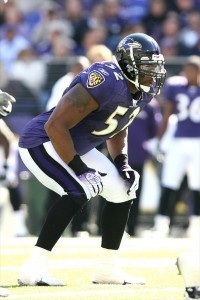Mastering the Basics - The Athletic Position
Have you noticed how much more invested athletes are in the process these days? They have their scheduled practices and games. They work with dietitians and go for physiotherapy appointments. They'll check in with a sports psychologist and see a massage therapist to keep everything moving well. They're all in and do whatever it takes.
And that can be a great thing.
The downside is when specialization happens too soon. Or turns into a situation that we are so focused on uncovering every last thing that could contribute to additional gains that we skip over the basics.
Consider the following...
An athlete doesn't do any rolling, stretching, mobility work or cool downs and resets. Even if they are doing some of these things they start late, go through the motions or simply rush the process. The result is extra visits to the massage therapist to address what was skipped over in training.
Or the athlete that doesn't eat whole, fresh foods but is seeking out the best protein powder or weight gainer. I have nothing against supplements but this isn't the place to start.
There are more examples we could look at but you get the point.
When we skip, or rush, the basics we end up having to come back and re-do or seek out another professional do something we could have addressed ourselves.
One of the most basic things for all sports is the athletic position.
[caption id="attachment_5241" align="aligncenter" width="200"] One of the greats, Ray Lewis, demonstrating ideal athletic position.
- feet hip width or slightly wider
- weight on the balls of the feet, slightly unloaded at the heels
- flexed ankle-knee-hip
- chest up
- eyes up and focused on the target or goal
So what's the big deal with the athletic position?
Well, as a coach it tells us a lot of information.
Does the athlete have the ability to get into the range required? It's not uncommon to see young athletes with excessive knee flexion (bending) and not enough hip flexion.
[caption id="attachment_5242" align="aligncenter" width="300"] L - good contribution of knee and hip flexion R - extra knee flexion with minimal hip flexion
L - good contribution of knee and hip flexion R - extra knee flexion with minimal hip flexion
With the picture on the right above, where would the athlete's balance point be? In other words where would you push the athlete to knock him off balance? It would be from the back, wouldn't it?
And once we're off balance we're not in an athletic position. The goal of the athletic position is to be able to safely and effectively move in all positions. And typically we see it more from as a defensive set as we don't know where the play will develop or when.
[caption id="attachment_5243" align="aligncenter" width="300"] The base of the feet are wider in baseball but still an effective athletic position by Jeter.
The base of the feet are wider in baseball but still an effective athletic position by Jeter.
What else do we notice in a poor athletic position?
Sometimes the torso falls to far forward. If we drew a line down from the shoulders this would be over the knees or slightly in front. See the image below for a visual on what this looks like.
[caption id="attachment_5244" align="aligncenter" width="300"] The shoulders may be over or slightly in front of the knees.
The shoulders may be over or slightly in front of the knees.
When the torso is too far forward we need to extend the neck in order to see the goal or play develop. This creates an occular reflex where by tilting the head back to see the play we cause an over-extension in the low back.
This creates a couple of problems. The first is a delayed response to move in reverse. We would need to extend the torso back first to get our center of mass over our base of support before we can move in reverse. The other problem would that when the hip is such a flexed position due to the torso too far forward we can't achieve the nice straight line from ankle-knee-hip-shoulder seen in the best sprinters.
So what is the solution?
We need to make sure we've got adequate range of motion at the ankle, hip and t-spine. Work to increase mobility at these joints so we can get into the athletic position. And lastly look to improve stability so we can maintain the athletic position throughout the course of the game. Next time you're watching a game pay attention to an athlete's posture at the start and end of the game. If it looks good at the start but falters at the end this could be a conditioning or muscular endurance issue. However if the form looks poor at the start it won't get better as the game goes on and fatigue sets in.
Lastly, from a technical or tactical coaching perspective we've all heard that defense wins championships. And if a coach or team wants to be known for their defense they had better be strong and proficient in the athletic position. You'll see the best demonstration of athleticism on the defensive side of the game.
When you subscribe to the blog, we will send you an e-mail when there are new updates on the site so you wouldn't miss them.

Comments